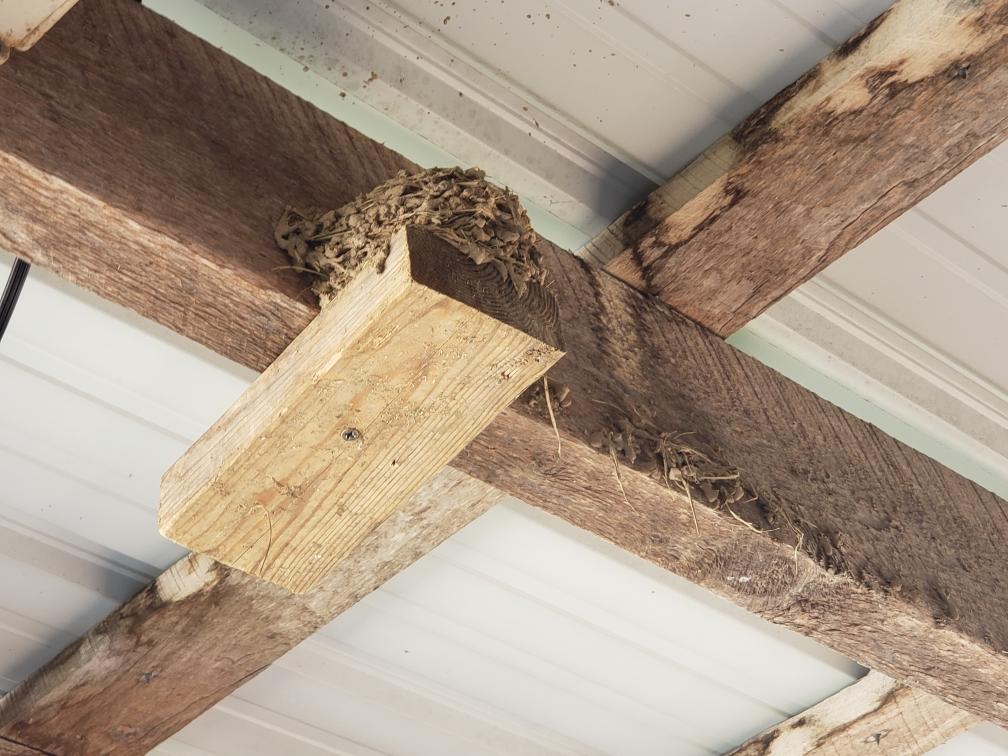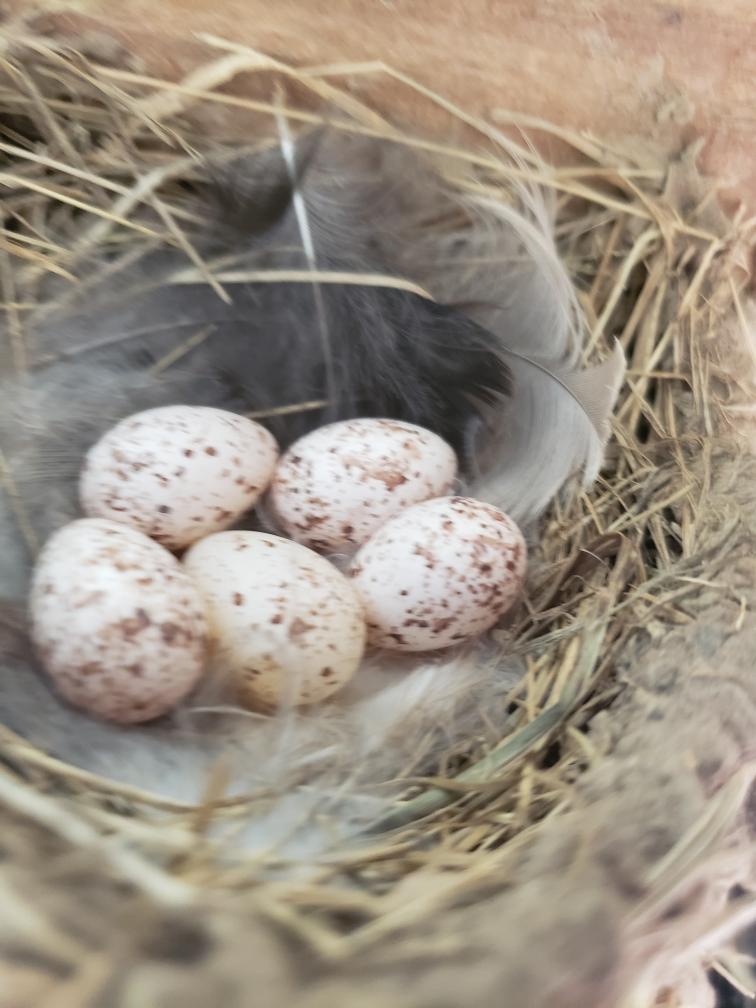Just outside the front door of our little on-farm store is a barn swallow nest. The location comes with much consternation to the breeding pair, even though they picked the spot. People come and go in that space throughout the day, their heads bobbing a couple of feet below the birds’ adobe home. We are glad to cohabitate with these birds, as they are the epitome of doing their due diligence to procreate the species.
We, like the swallows, go about our business of securing wholesome, organic food as the world swirls around us. Customers and staff alike marvel at the birds’ behavior and appreciate being so close to nature—and sometimes quite close as the barn swallows chatter and swoop by our heads to be sure we leave their nests be.
The backstory here is the swallows’ nest used to be inside what is now the packing shed. We actually held off enclosing and winterizing the building for a couple of years in reverence for these little birds. I still remember what I was wearing the day I took down their nest while they were thousands of miles away, having made their seasonal migration to somewhere in Central or South America. We were all relieved when they returned the next year and built a new nest on the other side of the barn.
To think, this little bird that weighs no more than seven or eight pennies, travels so far each winter. I would guess the people living there also refer to these birds as ‘their’ barn swallows since they return to the same nest each season. Think about that: They return to the exact same nest, meaning they know exactly where they are going while traveling such great distances.
Barn swallows, and their cousins the tree swallows and purple martins, are classified as aerial insectivores. This means they eat flying insects in flight. As we mow pastures, the disruption of the whirling blades sends insects up into the air to avoid the disturbance or because of it. The swallows and martins show their flashes of purple, teal and gold as they swoop and dive and change direction all around our heads in this learned behavior of opportunity.
When Laurie Thomas, UK Extension forester, led the bird-focused farm tour out here a few years ago, tour goers witnessed a group of these birds working a pasture. One would skim the tops of the plants sending insects into flight for the others to come along and feed. I asked her how many insects they would eat in a day, dozens? Hundreds? She said thousands. While that is awesome organic pest control, I wonder if they also consume the green lacewings and braconid wasps—the bugs we want to keep around.
A few weeks ago, we watched the barn swallow fledglings get their wings and take to flight from the nest. Then this past week, a set of swallows built a new nest on the other side of the same roof rafter, atop a light fixture, and still another new nest was attempted on the loading dock. I examined why the loading dock nest had failed and saw the mud balls were not sticking to the rough-sawn lumber, so I screwed an 8-inch-long piece of 2×4 to the rafter to help them secure a new nest. Now we have two nests by the front door and one at the back door.

The swallows must realize by now we are not going to harm them, even being in such close proximity, though we clearly make mom nervous. While I write this not 8 feet away, mom is watching me as she shifts and resettles on the nest. I can only imagine how tiny and fragile her eggs must be. When she left the nest, I guess to feed herself, I snapped this photo of her eggs. Remember, the nest is no more than 3 inches across.

‘Our’ mockingbird has been serenading me from the downed oak tree as I write this story, running through her series of other birds’ calls in sets of three. She reminds me that each species of bird has its niche.
As the pandemic regains its foothold on society, we are tirelessly going about our work of providing food for others. Much like our feathered friends, harm is not far away. We are doing our best to keep to ourselves, grow wholesome food and let the world go on around us. We are grateful for the opportunity to serve so many people that depend on us for the nourishment of their bodies.
Please be careful out there. Keep yourself from harm while you are helping others who may have been in harm’s way. —Mac Stone


Made with 
